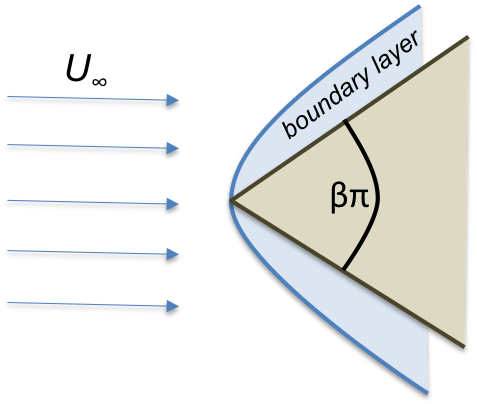Boundary Layer for Flow Past a Wedge
The Blausius boundary layer velocity solution is a special case of a larger class of problems for flow over a wedge, as shown in the following figure. The angle $$\beta \pi$$ represents the wedge angle.
The general solution is called the Falkner-Skan boundary layer solution, which starts with a recognition that the free-stream velocity will accelerate for non-zero values of $$\beta$$:
$$u_{e}(x)= U_{0} \left( x/L \right) ^{m}$$
where $$ L $$ is a characteristic length and m is a dimensionless constant that depends on $$\beta$$:
$$ {\beta} = \frac{2m}{m + 1} $$
The condition m = 0 gives zero flow acceleration corresponding to the Blausius solution for flat-plate flow.
We then define a similarity variable $$\eta$$ that combines the local streamwise and cross-flow coordinates x and y (defined relative to the surface of the wedge):
$$ {\eta} = y \sqrt{\frac{U_{0}(m+1)}{2{\nu}L}}\left(\frac{x}{L}\right)^{\frac{m-1}{2}} $$
